#the post about the byzantine church.
Explore tagged Tumblr posts
Text
obviously no more evidence is needed - this was already clear - but the fact that the zionist occupation claims a connection to the land they're stealing while also fucking destroying history inherent to it - because history does not support their settler colonial narrative or their violence - should make it even more obvious that this is only a fucking costume they're wearing
#zionism was never about genuine connection to the land#it was about putting the jews of europe somewhere else#they had other potential areas picked out as well!#screaming internally at the moment tbh#the people of gaza are the most important cultural record is fucking vital pls remember to donate / reblog fundraisers / share#as much as u can#mind u obv they are worth more than their history i don't mean to imply they aren't#to be clear i'm just like#man.#the post about the byzantine church.#the care that went into its restoration and preservation#like#fuck
1 note
·
View note
Text

i’m gonna cave and say one more thing about demilypyro because it irritates me to no end that people are accusing me of lacking reading comprehension when imo the actual issue is a tremendous lack of historical context and how out of touch people are with how absofuckinglutely devastating christianity has been to the modern world, especially for people of color.
But sure, some christians and weirdos online think trans people are icky so it's not real, probably. lol.
THIS is the part of her post i have tremendous issue with. it’s not her coping with humor. and i hope it’s obvious that i think transphobia is bad.
christians have done SO so much more harm than just thinking that queer people are icky. because before colonization happened, queerness was common and accepted, and in many cultures, even revered.
but then guess what, the roman empire happened. and then after the byzantine empire happened.
and then after that the still very much alive institutionalized catholic church rooted it’s cancer in the world.
and then after that, the british, french, spanish, portugese, german, italian, and yes, dutch (being particularly relevant, demilypyro supposedly being from the netherlands) empires happened.
and of course, we now have america.
and thus through conquest, bloodshed, and genocide, white people spread christianity to literally every corner of the world and with it, christian values of homophobia and transphobia.
as a second generation korean immigrant, first generation american, and the eldest child of a pastor, i am directly impacted and incredibly traumatized from white colonialism.
so yeah, it pissed me off more than a little bit how quick people are to accuse me of lacking reading comprehension and jumping to defend someone who made at best, a carelessly offensive and at worst, horrendously privileged comment.
if you don't have to think at least a little bit everyday how horrendously fucked up things are because of christianity, then that is an immense privilege.
i stand by what i said and i hope that more people seek to actively decolonize themselves instead of reveling in passive ignorance.
1K notes
·
View notes
Text
Turkey is about to convert another Greek Orthodox church to a mosque in Istanbul. They have been doing it relentlessly with many churches in the country, the most well known example being Hagia Sophia of course. This time they are about to convert the Church of Chora, a 4th century monastery which is particularly notable for having some of the best preserved religious art, icons and mosaics of the Byzantine style. It is the prime example of the Paleologan renaissance of the 13th century which was critical for the post-Byzantine and modern Orthodox style as we know it nowadays. Of course all the monument’s masterpieces are going to be covered for the church to be converted into a mosque.
It should be noted that as a city of 15 million, it already has more than 3,000 mosques, yet the need to turn historical churches to mosques seems to feel most urgent to them for some reason. Surely the reason must not be that Istanbul feels threatened by the presence of the remaining 2,000 Constantinopolitan Greeks (aka those who survived the islamisation, the pogroms, the deportations, the death marches and the genocide 🙃). So what is this urgency about?
Taking into consideration that from the next year they are also adding the irredentist fabrication of “Blue Homeland” (since when are Turks indigenous to islands for them to have a blue homeland?!?!?! 😂😂😂) to their schoolbooks, aka Turkey’s claim to half of Greece’s territorial waters in the Aegean Sea and all the islands located in these waters, and because it is obvious to me that a country of 80+ million cannot possibly feel threatened by a country of 10 million, I conclude once again that Turkey is simply threatened by the very easy modern international access to historical sources. So you have to start the brainwashing and the hate speech from an as early age as possible and you have to erase all signs of an alternative view of history from your streets to fight all the contradictory facts that can be learned from international sources within seconds from your phone.
184 notes
·
View notes
Text
It's been three months since I made this post about Saints Sergius and Bacchus, John Boswell, classical Western homoeroticism, and Christian homophobia.
Since then I have read both of Boswell's books on the history of gay/queer people in premodern Christianity (Christianity, Social Tolerance, and Homosexuality and Same-Sex Unions in Premodern Europe), familiarized myself more fully with the spectrum of charges against Boswell and his scholarship, and realized that he's been the subject of ideologically-motivated smear campaigns by just about every political/religious/academic faction you can imagine. My conclusion: Professor Boswell is a saint, martyr, and important queer elder who does not get the respect that he deserves, and I'm in awe of the sheer volume of the massive genius brain that was somehow crammed into his little blond head.
ANYWAY. This is an official followup to my original post, now that I've read Boswell's work.
I take back my hunch that Boswell's work was not intersectional. He was, in fact, a pioneer in the field of medieval social history, and utilized a wide range of critical lenses in his work. He was inhibited by the lack of documented evidence about some groups (for example, he was frequently criticized for not writing more about lesbians, but he was open about the difficulties of researching lesbians in history and explained what he was doing as a scholar and as a teacher to mitigate this) but he constantly called attention to issues of class, gender, and other social factors wherever they were relevant.
I was RIGHT in noticing that the slight difference in rank between Sergius and Bacchus seems to be an erastes/eromenos indicator! Boswell spoke at greater length and with greater sensitivity about erastes/eromenos dynamics in history, so if you want a deeper look into that, you should read his books.
I was also probably right in noticing that the legend of Sergius and Bacchus is seeded with various forms of Byzantine propaganda! I really wish that I could talk to him about it. :(
Both secular queer theorists and religious queer theologians seem to be most uncomfortable with the fact that Boswell was reporting on historical facts and observable social forces, not idealized concepts of queer people as somehow being more ethical or spiritual than the straight majority. He included evidence of things like abuse, prostitution, and exploitation not because he thought they were cool, but because they were part of the material reality of queer people's existence in the past, just like they were part of the material reality of his own 70s-80s gay subculture.
That was his bottom line: gay/queer people are a normal human variation, and as a historian, he could provide hard proof of their existence and what their lives might have been like. If his work seems "shallow" or "dated" to some more modern queer researchers, it's only because so many people were willing to dismiss his scholarship, reject his work, and abandon his research leads after he died. But, he was actually super smart and his scholarship was actually meticulous, so even his most dedicated critics have been unable to "debunk" him. Christianity, Social Tolerance, and Homosexuality most recently had a 35th-anniversary reprinting, and he is still being cited as an authority by more recent scholars.
Even though the full strength of the Church and the Academy were leveled against him, his work has proven its own worth. He still deserves to be read and discussed by both professional scholars and enthusiastic hobbyists. And, the Open and Affirming movement in Christianity wouldn't be as strong as it is without his confirmation that "gays and lesbians are normal," as he put it, and not simply a construct of modern society.
Rest in power, Professor Boswell. We won't forget you.
Since I made that post, I have also opened a sticker shop with a bunch of queer Christian saint icons, including Boswell and some of the queer saints he discovered/wrote about. They're pretty cool. You should buy one.
243 notes
·
View notes
Text
Today in “Sal, what the fuck are you talking about?”: the middle Byzantine period.
The period from the mid-ninth century to the late 11th was defined by a resurgence in the empire’s fortunes, as the Abbasid Caliphate weakened and the bloody stalemate on the eastern border yielded to conquest, plunder, and expansion into regions that the empire hadn’t controlled for centuries. Domestic politics responded predictably to this influx of land, wealth, and prestige: the generals who led these conquests became immensely rich, respected, and in some cases powerful enough to make themselves emperor. Byzantium had never had a true hereditary aristocracy—when you died, your titles generally died with you—but these guys came pretty close, as a few dozen intermarried clans came to dominate both military and civilian politics for generations.
Making military leadership into a family business generally went well, as future commanders could begin learning the trade from a young age, instructed by the most experienced leaders in the empire. The downside was that their egos grew along with their conquests, and when they felt they weren’t being treated with the honor due to such a distinguished family, they had all the resources they needed to launch a rebellion against the throne. This happened again, and again, and again, and again; it’s no coincidence that this was the period when surnames became common among the wealthy.
In the palace, this era was defined by the so-called Macedonian Dynasty, a string of emperors and usurpers founded by Basil, a peasant from—you guessed it—the military district of Macedonia. Basil took the throne by becoming the emperor’s confidant and most trusted servant, before quite literally stabbing him in the back.
The next two centuries saw an alternating series of Basil’s descendants and usurpers take the throne, with coups and rebellions too numerous to list here. Basil’s heirs had a tendency to die while their sons were still minors (or to leave no sons at all), leaving a mad scramble for a new man to marry or kill his way into the imperial family. This was also the heyday of the court eunuch, as aristocrats looked for servants who would serve their family without trying to displace them in favor of their own sons; of course, plenty of eunuch did displace emperors in favor of their own friends and family, or else overshadowed them so completely as to become the functional ruler themselves.
Culturally, this period was quintessentially Byzantine. Emperors were very concerned with soft power, so they poured money into anything that would make them seem like the holy sovereign they considered themselves to be—histories, encyclopedias, churches, monasteries, public games, bejeweled reliquaries, and the like. Foreign ambassadors were feted with gold and silk in front of a throne that could rise from the floor until the emperor was looking down at the from the heavens. My favorite piece of writing from this era is the Book of Ceremonies, which spends hundreds of pages detailing the protocol for every imaginable public event, from the order of seating at imperial feasts to the proper weight of cargo loaded onto an army packhorse; it shows how the emperors tried to synthesize the importance of orderly, standardized, professional administration with the need to appear wise, just, and all-powerful to their subjects. It also shows how unbelievably wealthy the government was—very few states, at any point in history, had the time and resources and literal tons of gold to spend on court ceremonies that intricate and impressive!
I’ll spare you the list of emperors, their personalities, and the various schemes and subordinates that put them on the throne; that’s a whole separate post. Suffice to say that I think this is one of the most interesting eras of history, and I encourage everyone to learn more about it.
44 notes
·
View notes
Text
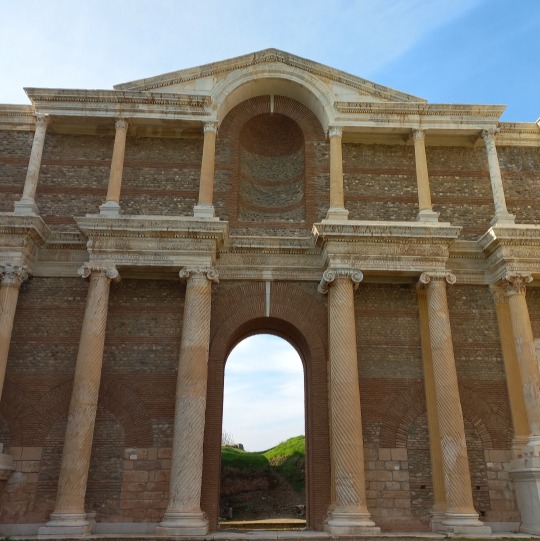
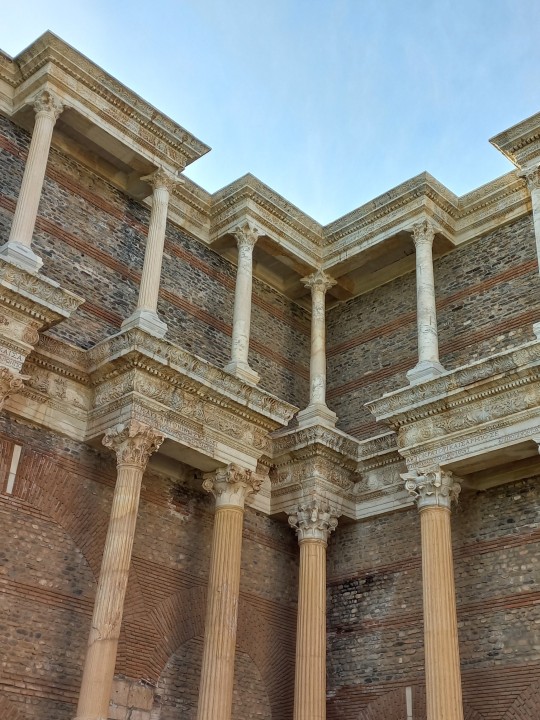
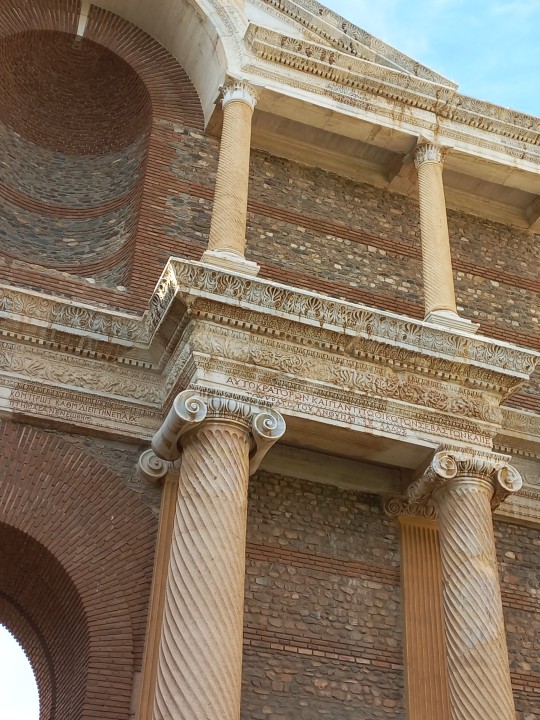
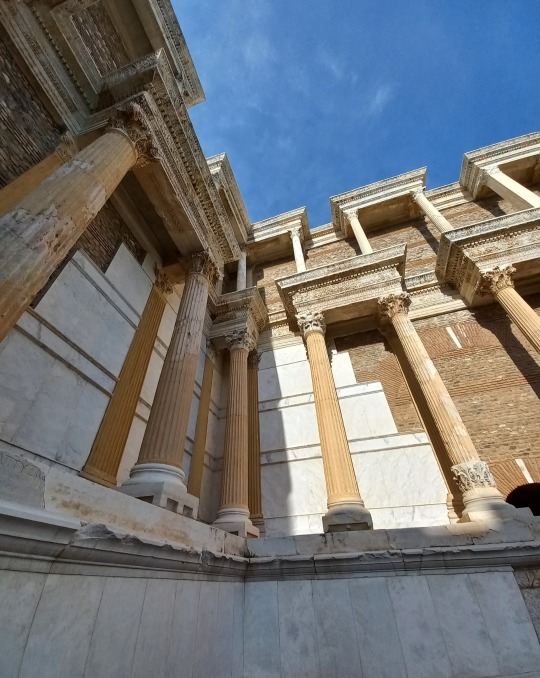
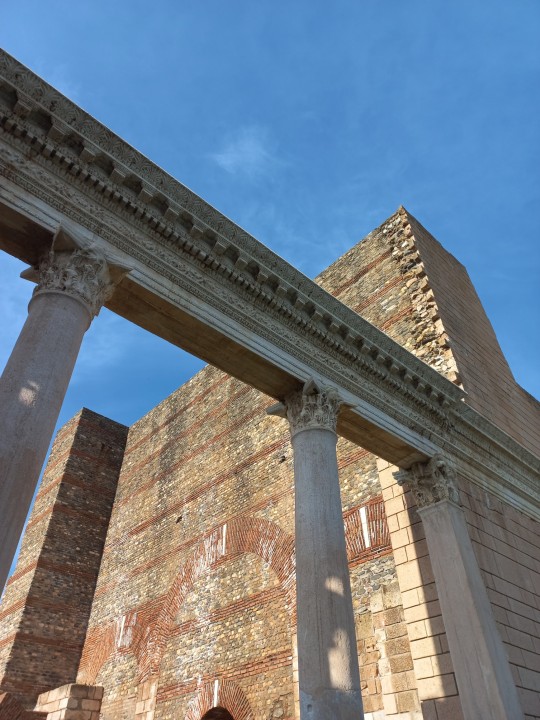
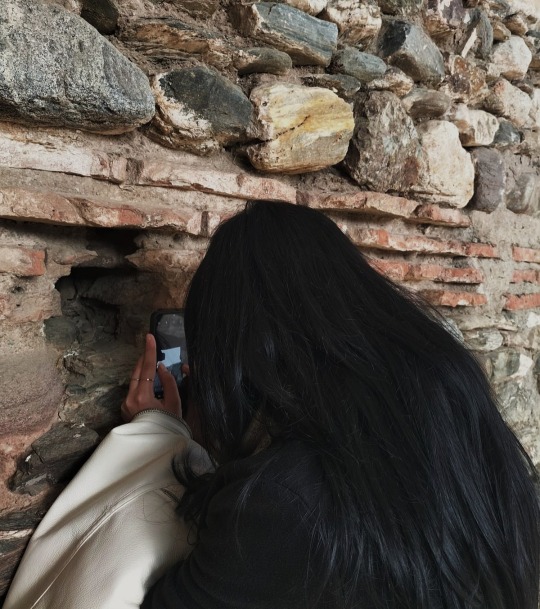
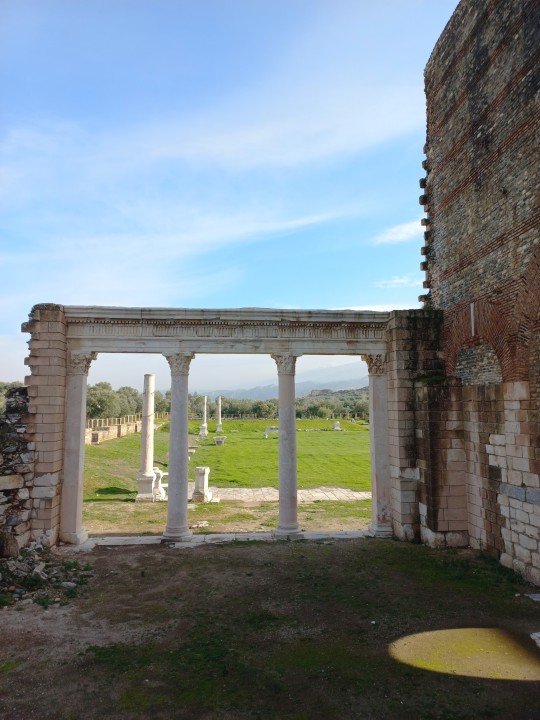
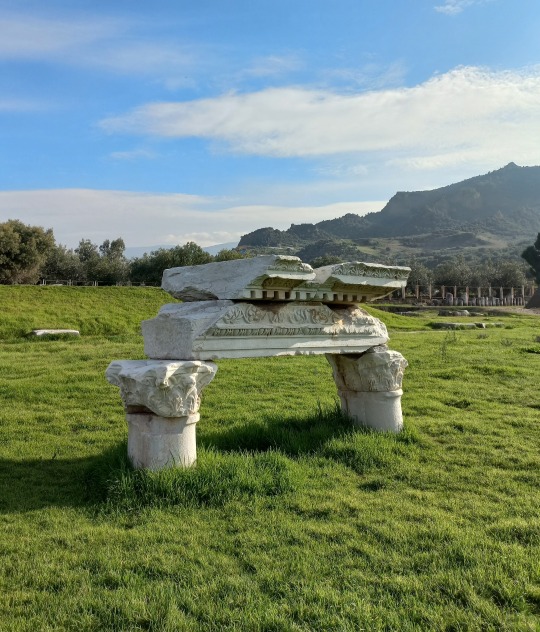
Sat, Jan 12 - I visited the ancient Roman city of Sardes today for the first time. (Information about the city is under this post.) It consisted of the Gymnasium with the remains of many Byzantine shops including restaurants and painting shops, a public pool, tombs, and a Synagogue. It was truly refreshing to see the place overall, but what I adored about the visit was the fact that you could imagine and experience the feeling of what it was like to be living in an ancient city, as it was empty because of the weather conditions. No voices, no noise, no motion, just the smell and the air of this ancient place. (I bet Henry Winter would die for it.) The Temple of Artemis was also close and I went there as well. I'll publish the pictures from the Synagogue and the Temple next if you want to check them out.
Sardis (/ˈsɑːrdɪs/ SAR-diss) or Sardes (/ˈsɑːrdiːs/SAR-de ess; Lydian: 𐤳𐤱𐤠𐤭𐤣, romanized: Sfard; Ancient Greek: Σάρδεις, romanized: Sárdeis; Old Persian: Sparda) was an ancient city best known as the capital of the Lydian Empire. After the fall of the Lydian Empire, it became the capital of the Persian satrapy of Lydia and later a major center of Hellenistic and Byzantine culture. It is now an active archaeological site in modern-day Turkey, in Manisa Province near Sart.
In 334 BC, Sardis was conquered by Alexander the Great. The city was surrendered without a fight, the local satrap having been killed during the Persian defeat at Granikos. After taking power, Alexander restored earlier Lydian customs and laws. For the next two centuries, the city passed between Hellenistic rulers including Antigonus Monophthalmos, Lysimachus, the Seleucids, and the Attalids. It was besieged by Seleucus I in 281 BC and by Antiochus III in 215-213 BC, but neither succeeded at breaching the acropolis, regarded as the strongest fortified place in the world. The city sometimes served as a royal residence, but was itself governed by an assembly.
In this era, the city took on a strong Greek character. The Greek language replaced the Lydian language in most inscriptions, and major buildings were constructed in Greek architectural styles to meet the needs of Greek cultural institutions. These new buildings included a prytaneion, gymnasium, theater, hippodrome, and the massive Temple of Artemis still visible to modern visitors. Jews were settled at Sardis by the Hellenistic king Antiochos III, where they built the Sardis Synagogue and formed a community that continued for much of Late Antiquity.
In 129 BC, Sardis passed to the Romans, under whom it continued its prosperity and political importance as part of the province of Asia. The city received three neocorate honors and was granted ten million sesterces as well as a temporary tax exemption to help it recover after a devastating earthquake in 17 AD.
Sardis had an early Christian community and is referred to in the New Testament as one of the seven churches of Asia. In the Book of Revelation, Jesus refers to Sardians as not finishing what they started, being about image rather than substance.
I take the pictures that are on my blog myself. In case you're interested in this post, I also post/reblog content including travel/cultural pictures, books, book recommendations, analysis, quotes, anything related to movies, series, and girl blog entries.
#sardes#ancient rome#ancient greek#gymnasium#ancient history#ancientmonuments#roman architecture#archeology#blog#travel#history#the secret history#henry winter#synagogue#dark academia#aesthetic#light academia#books#girlblogging#hellenistic#reading#if we were villains
42 notes
·
View notes
Text
Vampires before they were cool... (2)
In my last post, I left you by the 16th century. But it was the 17th century which was the BIG century for the evolution of the vampire myth.

During the Middle-Ages, the vampire manifestations were mostly localized in Western Europe: vampire tales came from the British Isles, from France, from Spain, from Portugal. However, throughout the 16th century, these phenomenon rarefied themselves in the West… Only to brutally amplify and multiply by the East. In the 17th century, vampires popped up everywhere in the Balkans, in Greece, in Russia, in the eastern part of the Austro-Hungarian empire. In fact, by the 17th century, vampires had turned so rare in Western Europe that some people (like Voltaire in France) would later believe vampires were “invented” by the 17th century and did not exist prior to this date…
Why such a big shift? Well, sociologically speaking, Eastern Europe was a poor and isolated part of Europe at the time. The great innovations and inventions of the Renaissance had not crossed over to the East, unlike things like the vampire tales, which travelled very fast – and while the bourgeoisie and the city-dwellers of Eastern countries were educated, the rest of the population, the peasants and the folks of the countryside, usually did not know how to read or write. It was a fertile ground for folktales to take root and superstitions to manifest themselves… But there was a second reason that amplified this one: a religious difference. In Western Europe, it was a time of hunts and persecutions of all kinds – be it the Catholic Church and its Inquisition who led a merciless fight against anything deemed an “heresy” or a superstition contradicting its canon beliefs; or the Anglican Church of the Stuarts who caused one of the largest witch hunts of history. These phenomenon caused the disappearance and erasure of the vampire myth in Western Europe… But to the East, the Byzantine-descending Church had a more open-mind and a greater tolerance when it came to local folk-beliefs, even including superstitions in its rites and practices: as such, the vampire myth was welcomed by the religious authorities – a case being the brucolacs of Greece.

The Greeks have very ancient beliefs when it comes to the dead who do not rot and get out of their graves: the archetypal case is the one of the “vrykolakas” (usually re-written as “brucolac”). They were people turned undead because they were not buried in a holy ground (death by suicide, or being excommunicated). However when the legend of the vrykolakas started they were… harmless and pitiful creatures. They were tormented souls who only sought to escape the physical body they were trapped within, and did not harm humans: to send them to an eternal rest, the Church just had to remove its excommunication and their soul would be at peace. However, from the 16th century onward, the nature of the vrykolakas changed with the arrival from the West of these yet-unnamed harmful undeads. And this lead to a confusion with werewolves.
Yes, werewolves: “vrykolakas” was also a Greek term to designate werewolves, who were very present in the folklores of the Balkans or the Carpathians. The werewolf myth was, just like the vampire myth, crystallized by the Christian medieval beliefs. And just like the vampire, it had an “official” recognition: Sigismund, king of Hungary and leader of the Holy Roman Empire (1368-1437) had the Ecumenical Council of 1414 recognize officially the existence of werewolves, and in the 16th century the Roman Church led official investigations on lycanthropy. Between 1520 and the mid-17th century, more than 30 000 cases of lycanthropy had been reported in Europe (in the West, France was the most touched, while in the East they were found mainly in Serbia, Bohemia and Hungary). A rumor started spreading around, about how when werewolves died they turned into “blood-sucking undead”. This led, in the end of the 17th century, to the apparition in popular culture of vampire-werewolves entity. They were found in Silesia, Bohemia, Poland, Hungary, Moldavia, Russia, and of course Greece, where the peaceful brucolacs were turned into bloodthirsty monsters ; and by the 18th century they covered pretty much all of Northern and Central Europe. Every country had its own terms, its own names, and its own traditions when it came to these undead: “upir”, “brucolac”, “blutsauger”, “vulkodlak”… In Slovakia and Romania for example, the “dead that walks” was accused of every misfortune: famines, diseases, disasters and misfortunes were supposedly all caused by them, and it could only be solved by opening their graves and plunging a stake in their bodies. People feared the “strigoi” and the “moroi”, these corpses that got out of their coffins at night to drink the blood of the living, and they were FAR from the glamorous vampire we think of today. They were these fleshy, bloated corpses that wandered around with their eyes bulging and wide-open, never blinking, repulsive monsters with barely anything human left in them. To recognize one, you had to a find a corpse that was still fresh despite being buried for quite some times, and who had nose either on its mouth or nose. Then, you needed to pierce it with a stake, or removed its heart to burn it. In Romania, the families of the recently deceased brought wine and bread on the graves in hope of appeasing them. Slovakians rather sent elderly ladies in the cemeteries to stab graves with hawthorn branches or old knives: five in total, four for the limbs and one for the chest, to “nail” the corpse to its coffin. Eyes were closed with coins so they wouldn’t open, mouths were filled with garlic and wired shut, and if these rituals were useless a special person would be brought to destroy the corpse by decapitation, fire and religious symbols – a holy man, or a “dhampir”, a man rumored to be half-vampire… In Romania, many, MANY people could turn into vampires, not just werewolves: seventh sons of seventh sons, babies born with a caul o with teeth, individuals who had both red hair and blue eyes, and of course all the criminals, suicides and other disgraced people who did not receive proper burial.
All the fuss and commotion in Eastern Europe ended up alerting the capitals of Western Europe. In October of 1694, the French review “Le Mercure Galant” (a courtly magazine for the nobility) had an entire issue dedicated to these vampires of the east. By the end of the 17th century, while the word “vampire” still did not exist, it was a true mass psychosis, an “epidemic of undeads” followed by ferocious “hunts” during which corpses were dug up to be “killed again”… At the beginning of the 18th century, the authorities decided to take measures to calm things down and quiet this upcoming chaos. Though at this moment, the mass panic about vampires still relied on rumors, oral culture and other travel-tales: there was no written text or official report per se… Until the 18th century, when the authorities stepped in.

Cases of so-called “vampires” were studied and mediatized in Austria and Serbia, Prussia and Poland, Moravia and Russia. When the plague hit the eastern part of Prussia in 1710, the local authorities dug up themselves the corpses accused of having caused the epidemic. But two specific cases became the most famous and spectacular ones, making vampirism a full European thing.
The first was the death of a peasant: Peter Plogojowitz. He died in 1725, but his small village of Kizilova quickly called him a vampire and accused him of having caused eight deaths within the village. Testimonies talked of Plogojowitz being seen in people’s bedroom at night, trying to strangle them. When the grave was opened by the authorities, it was testified that his body had not yet rotten, and that fresh blood was on his mouth. He was quickly staked and burned. The second case was the one of Arnold Paole, a peasant from the small town of Medwegya who died falling from a cart in 1726(27?). He had apparently confessed to his fiancée, some days before his death, that he had encountered what he thought to be an undead… Paole himself was accused of having turned into a vampire, and caused the death of the village’s cattle and four people. His body was ug up and pierced with a stake. The case of Paole was extremely interesting because an authority was sent to study the case: Johann Flückinger, who investigated in his quality of both high-ranked major and army doctor. The result of his presence was the famous “Visum et Repertum” document, a 1731 report of the entire case and his conclusion, cosigned by other doctors and officers, and where (according to Antoine Faivre) the word “vampire” first appeared in the history of written texts, spelled “vanpir”. The “Visum et Repertum” became an object of curiosity for all the ruling classes of Western Europe: we know that Charles VI of Austria and Louis XV of France were both invested in the outcomes of the Plogojowitz and Paole cases. The Paole case was notably described with many details in “Le Glaneur”, a famous Franco-Dutch review often read at the Versailles court (issue of march 1732) – and it was in this “Le Glaneur” issue that the word “vampire” first appeared in the French language, spelled “vampyre”. The very same year and month, an article was published in the “London Journal” which brought over the word “vampire” to the English language.

These two cases also led to a LOT of treaties and dissertations being written about vampires, by both pseudo-scientists and actual men of the Church, which in turn caused intense debates and huge controversies among universities and literary circles. The first of those treaties is from the latter part of the 17th century, published at Leipzig in 1679, “Dissertatio historica-philosophica de Masticatione Mortuorum”, by Philip Rohr. This text tried to explain why the dead would “masticate” in their graves by explaining it was a demonic possession of the corpses. This book caused a huge controversy in the 18th century, splitting people in two sides: either you agreed with Rohr’s supernatural explanation, either you deemed this an ignorant superstition. Another famous treaty was published in Leipzig, in 1728 this time: “De Masticatione Mortuorum in Tumulis Liber” by Michael Ranft. This book opposed and discredited the thesis of Rohr by claiming the devil had no power onto the corpses of the dead, and that while the “undeads” would influence the living, they could not appear to them under any tangible form. Many other treaties would follow, such as Johann Christian Stock’s “Dissertatio Physica de Cadaveribus Sanguisugis” (1732) or Johann Heinrich Zopft’s “Dissertatio de Vampiris Serviensibus” in 1733.
Though the most famous of them all is Dom Augustin Calmet’s 1746 Parisian text, “Traité sur les revenants en corps, les excommuniés, les oupires ou vampires, broucolaques de Hongrie, de Moravie, etc », published in two volumes (Treaty on the undead in body, the excommunicated, the upirs or vampires, brucolacs of Hungaria, Moravia, etc). This Benedictine monk and famous commentator of the Bible wanted to refute the belief in vampires: to do so, he collected and analyzed an enormous amount of trivia, testimonies, folktales and “cases” surrounding vampires. While his work is mostly a naïve collection and compilation of anecdotes, it still held in the future a huge importance for the study of historians, sociologists and anthropologists, as it is one of the most complete catalogues of vampire phenomenon of its time. Other high-ranking members of the Church also tried to express the official position of their religion on vampires: Giuseppe Davanzati (archbishop of Florence, patriarch of Alexandria) wrote in 1774 “Dissertatione sopra i vampire”, and the pope Benedict XIV (Prospero Lambertini) wrote a few pages about vampires to discredit their existence in the fourth book of his enormous “De Servorum Dei Beatificatione et de Beatorum Canonizatione” (1749). Unfortunately, these anti-vampire testimonies were perceived as the Church giving a form of credit and recognition to these undead…
In France, meanwhile, the authors of the “Encyclopédie” (aka the very first encyclopedia ever) were greatly annoyed and irritated by this obsession for vampires. Voltaire, in his 1787 “Philosophical Dictionary”, wrote an entire rant about them, while Rousseau denounced the belief in vampires in a letter he sent to the archbishop of Paris. Both wondered how such superstitions could become so popular in the age of “reason and progress” that was the Enlightenment. But indeed, all these texts and treaties about vampires simply helped spread the legend, making people who had never heard about these monsters learn all about them – and most importantly, it popularized and stabilized the use of the term “vampire”, and its Latin equivalent “vampirus” (though it was still spelled differently depending on the countries and time eras: vampyr, vampyre, wampire…).
However the 19th century would see the end of the actual belief in vampires. While at the end of the 18th century vampires were still the hot talk of universities and literary salons (especially in France and Germany), the actual “cases” and supernatural phenomenon the myth built itself upon were rarer and rarer. The ideas and philosophies of the Enlightenment had finally made their way across Eastern Europe, plus the great era of the plague was over: education and health worked together to erase the vampire from people’s minds, especially as the industrialization of Europe changed heavily the lifestyle of people and the landscape of the countries. There were still cases of vampirism in the 19th century, but they were isolated, and we never saw any mass panic or large-scale “vampire hunt” as there used to be. The vampire was a manifestation of ancient and primal fears in a world filled with superstition, darkness and disease – in this new era of the miracles of technology and wonders of science, dominated by materialism and positivism, the vampire had no place in people’s hearts… The early 19th century still has magazines and newspaper talking from time to time of an Hungarian or Serbian remote village where coffins are opened in quest of vampires, but nobody is interested anymore, everybody focused on gas-lamps and railroads. Nobody dreams of the vampires, except maybe for the Romantics, who are repelled by this era of bourgeoisie and businessmen dominated by obsessive work, absolute religion and social hierarchy, and in the vampire find back this nostalgia of a distant, frightening, fascinating “magical past”…
And thus the vampire would move from a being of religion and science, of superstition and newspapers, to an entity of poems and novels – from Ossenfelder’s poem to Stoker’s Dracula…
12 notes
·
View notes
Text
fic: a woman's charm
A03. With old Chucky coming out, I just had to post the ancient milf fic for @fourcheeseonrye. tw: E, age gap. tiffanica.
"I know I fib a good deal. After all, a woman's charm is fifty percent illusion." - Blanche DuBois, 'A Streetcar Named Desire'.
Nica Pierce volunteers at an exclusive retirement home for the wealthy, where she meets the enigmatic Tiffany Valentine.
---
On her fourth day at her new volunteering job, Nica’s mother drove her to work and then stared up at the building with a look on her face like she’d been slapped.
“Are you really sure about this, Nica?” Sarah asked.
“Positive,” Nica said.
“It looks like a prison.”
“Only on the outside, Mom,” said Nica, patiently. “And it’s a retirement home.”
Harrogate Retirement Home was formidable. With its towering electric fences, privacy walls eight metres high, and smartly dressed guards at the lobby, it was one of the most secure – and rich – retirement homes Nica had ever seen. As she wheeled herself into the front lobby, which was paved with marble and lined with honest-to-God porphyry columns like a Byzantine church, Nica nonetheless knew she was exactly where she was supposed to be...
READ THE REST ON A03
22 notes
·
View notes
Note
hello... so i'm from a culturally christian family, raised pretty much agnostic and without a lot of knowledge abt the religion. i do have an interest in how it all works (especially as a history major—knowing how christianity works/has worked is obviously pretty important to understanding many places and times) and i guess i figured i could start off with baby steps, like asking someone on tumblr such as your esteemed self... what is liturgy exactly?
merci merci!
my esteemed self 😭 you are too kind
Broadly for Christians liturgy is a pattern of worship used during services. Religions that are not Christianity also have liturgies but what liturgy means in Islam, Buddhism, Judaism etc is going to look completely different than in Christian liturgy. tl;dr as a history major I'm sure you get how the different ways cultures Do Religion is going to inform pretty much everything, so basically when we talk about liturgy it is important to contextualize it. this is why this post is one million words long.
Basically for Christians, liturgies are the pattern of worship: the rites, the prayers, the scriptures used, the confessional prayer, the Eucharist, the benediction etc. And what it looks like in Catholic/Eastern Orthodox/Protestant churches is going to be extremo different. In my understanding, Catholic and Eastern Orthodox services have very strict liturgical patterns; Protestants are more loosey goosey. I feel like if you google Byzantine Eastern Orthodox liturgy and then look up on youtube for recordings of a Pentecostal Baptist service, you will probably get a good view of how wackshit different each branch and each denomination does and experiences liturgy.
On my part, I was raised in and have attended United Methodist Churches pretty much exclusively, so for me liturgy is the order of worship, a series of specific steps that take us through the service. And what is in those steps changes every single week and we also don't have the same steps every week (Eucharist/Communion once a month for example rather than every week, and often no prayer of confession).
However I was also raised in an interfaith household by two very creative and very crazy people, so when I talk about writing hockey liturgy I am also applying a lens of like, religion is where you find and make sense of the world and your liturgies should reflect the meaning you find or want to find in the world. Rather than what The United Methodist Book of Worship or indeed any religious Christian with common sense would want me to think as I write liturgies. Pastors hate me for my whimsical interfaith swag etc
#i found a diary entry earlier today from when i was talking to that franciscan friar and he stopped in the middle of our conversation#and was like huh. you have a very interesting understanding of christianity. you should be a use case for interfaith households#ANYWAY I HOPE ANY OF THAT WAS HELPFUL. feel free to ask more questions but you will receive similarly formless responses#cage replies#anon
3 notes
·
View notes
Note
I'm here for you nerding out about history, so: 4, 5, 9, 13, 29!
Oh boy, do I have a long post for you... One of these took up A LOT of time fact-checking and researching, I could do a power point presentation on it ;)
4) Favourite historical era?
The Italian Renaissance, hands down. Anyone who knows me, knows that I am such a fucking dweeb for the Renaissance. Specifically the 1400s in Florence, during the rise of The Medici. Say what you want about them, (yes they were corrupt and essentially a Renaissance version of a mafia family) but the good they did for Florence AND the preservation of ancient culture cannot be denied.
To be able to live during that time, when art and literature and philosophy was thriving. Where new ideas about love and spirituality were making their ways into the intelligentsia, I would have LOVED to witness that.
Thing is, I’d have to do it disguised as a man, because history is a bag of dicks, unfortunately. But just to be able to be a part of a symposium with Marsilio Ficino, Pico della Mirandola, and Lorenzo dei’ Medici and just listen to them discuss Plato and the ways of Platonic Love. To bear witness to Botticelli painting or Michelangelo sculpting. My sibling once told me I have a “Renaissance Face” (which was probably the best compliment they could have given me). If that could have gotten me an in, with these guys, even as a model, it would have been fine with me. Just to watch the masters at their craft.
I dunno, maybe I could have joined them (disguised as a man, of course), and share my own thoughts about philosophy and love and sacred bonds between people. Maybe talk about new ideas involving gender… who knows?
Not to mention, Florence also had a thriving underground queer scene during this time… so… do with that what you will.
Renaissance Florence… Sometime between 1450 and 1490.
5) Favourite weapon?
You know, as much as I love history, I really don’t care for the military stuff. In fact, I had to look up Ancient Roman weapons, because if I were to have a favourite weapon, it would be from the Roman Empire.
So, in my quick research of Roman weaponry, I remembered that the Eastern Roman Empire (or Byzantine Empire) had a fucking BADASS weapon that had everyone from the Crusaders to the Mongols quaking. They called it Greek Fire, and it was typically used during naval battles. What you would have, if a flame-thrower device attached to the front of your ship and Greek Fire would just come out from there. The precise recipe for Greek Fire has been lost to the ages, but you did not want to fuck with it.
What made Greek Fire especially horrifying was that it would continue to burn while in contact with water. You could not douse it. You just had to let it burn until it ran out. Think of that creepy bright green fire from Game Of Thrones. The one that they used for the Battle of Blackwater and that epic church explosion. That would be the closest thing to Greek Fire that I can think of. It was terrifying, amazing, and allowed Constantinople to remain a military powerhouse in the Mediterranean, despite constantly being threatened by neighbouring empires.
9) Favourite historical film?
I already answered this question in another ask. It’s La Vita E Bella (Life is Beautiful). I highly encourage everyone to watch this movie, but only when feeling emotionally stable because it has a VERY sad ending.
Here are some other historical movies I REALLY love:
The King’s Speech - Can’t stand the Monarchy, but GOD I love Colin Firth and he is AMAZING as King George VI.
The Young Victoria - Again… Do not like the Monarchy, but Emily Blunt is so charming, and this was such a sweet movie.
The Imitation Game - Made me seeth in fury over the injustice served to Alan Turing, but fucking Bumblebee Cabbagepatch was SO GOOD.
And again… SO many movies I need to watch… I mean Jesus.
13) Something random about some random historical person in a random era.
This random fact is about the Emperor Justinian and his Consort, the Empress Theodora. He changed a marriage law in order to be able to marry her.
Back in the Early days of the Eastern Roman Empire (or Byzantine Empire), around 525 CE, you weren’t allowed to marry beneath your class, and Theodora was not only a commoner, but she was an… an… actress! (cue shocked gasps and pearl clutching here). Mind you, she was also known as a prostitute, but that’s debatable. Anyway, Justinian created a law so that her status could be changed, and then changed another law, so that he could marry her. He was so in love with her, that he did not give any shits about what anyone had to say about their union.
And honestly, he could not have picked a better Consort. Theodora was smart, funny, and an all-around badass. She challenged him, matched him, and took charge when she needed to. She was the reason the Nika Revolts failed and the Emperor kept his throne. She cared for Justinian while he was fighting the Plague (yes, that Plague, it was around during Justinian’s time too).
God, I love them.
29) Great historical mystery you are interested in?
Oooo… This is another REALLY good question.
The first answer I came up with is a bit of a “cheat” amongst historians. A sorta of “of course you would pick that, everyone wants to know what happened there”, but I really don’t care. When I first heard about The Princes In The Tower, I was beyond fascinated by their story and the mystery surrounding them.
Ok, a bit of a backstory. Picture it. England, 1483. For the last several decades, the country has been ravaged by a civil war known as The Wars of The Roses. I will NOT go into this, because Christ we do not have time for that. All you need to know for this story is that the current monarch is Edward IV. He has MANY children, among which are two young sons (an heir and a spare). If he can keep hold of his reign for long enough, he is set to establish a new dynasty. Unfortunately for him, he dies in April after an unexpected illness (do with this what you will, could have been poison, could have been the Middle Ages where a paper cut could kill you).
Now, England did not really have a Law of Succession (that would come MUCH later, in 1701), a reigning monarch would have to hope that his vassals would follow who he deemed as heir and not stir any shit. For the most part, it worked out well, but there were a couple of instances where shenanigans took place (see: Empress Matilda and The Anarchy). ANYWAY, the heir to the British throne was Edward IV’s son, Edward V. Thing is, Edward’s 12. He’s a child, and not ready to take the throne. Before his death, Edward IV established that until the time of his son’s majority, the Kingdom would be ruled under a Regency, headed by his younger brother, Richard, Duke of Gloucester. Richard would henceforth be known as the Lord Protector (the most powerful guy in the Kingdom, basically).
Makes sense, right? Well, get ready for some shenanigans.
This is already getting WAY too long, so I’ll speed things up. Richard claims that the King isn’t safe with his current protectors (his maternal uncle, and his half-brother), so he has them arrested and executed and the King placed under his custody (for his protection). This causes the King’s mother, Elizabeth Woodville to go into sanctuary at Westminster Abbey. She takes her remaining children with her (including the spare, 9 year old Richard, Duke of York).
Up until this point, everyone is certain that the young King will be coronated as soon as he and Uncle Richard arrive in London. However, that does not happen. The coronation is postponed again, and again, and again. The young King, meanwhile, is sent to live in the Tower of London (which at that time served as a place where one would wait to be coronated). Here’s where things get a little dicey, see Uncle Richard claims his dearly departed brother was previously married before Elizabeth Woodville, thereby making any and all his children illegitimate. Thus making him the true heir to the throne. Around this time, Richard requested that the 9-year old Duke of York be sent as well to be protected in the Tower.
The last time anyone would see the two Princes would be in the summer of 1483. Richard is crowned King Richard III (of Shakespeare fame) and would go on to rule for a little while before dying at the Battle of Bosworth Field (where “A horse, a horse, my kingdom for a horse” comes from). Henry Tudor becomes King Henry VII and establishes the well-known Tudor dynasty.
The fate of the boys remains, to this day, unknown. There are many theories as to what happened. The most popular one being that they were smothered with a pillow and buried under a staircase in the Tower. In fact, a couple of centuries later, some bones were found in the tower and were assumed to be those of the two Princes. However, examinations in the 30s showed them to contain animal bones, along with the bones of two small children. No further testing was done, and the bones were re-buried. There have been petitions for there to be DNA testing involved, but Queen Elizabeth II refused to do so.
Who knows, maybe King Charlie III is just as curious as the rest of us, and will agree to exhume the bodies once more.
There are other theories and many pretenders that have popped up throughout history, but this post is already STUPID long, so I’ll leave it here
ASK ME HISTORICAL QUESTIONS! THIS WAS SO MUCH FUN!
#belle babbles#historical asks#i am loving these#please ask me more questions#i am thirsty for history#ask game
6 notes
·
View notes
Note
Ο αγαπιμένι θεία mouuuuuuu, Merry Belated Chrstmas! Christ is born! Alleluia! Speaking of Christmas, what are the differences between an Greek Orthodox Nativity season vs, say, the popular American Christian Christmas season (As a Christian from a culture that isn't Christian by default, I want to take reference from more traditions of Christmas than Amercia, lol)? Love, Ο Ξενος που βασίζεται σε το Google Translate για να το Ελληνικά μιλήσει
Γεια σου αγαπημένε/-η Elby! I'm very sorry for the delay!! Accept my apology and much love for your sweet ask! Initially I was planning to have a big answer but I found a great article from the Greek embassy of Canada that sums many of my points! It also has info about other Greek Orthodox festivals and customs!
Also, take a look at my tags #xmas and #christmas where I have collected a ton of posts about this period!
Some paragraphs from the article for those who are too bored to open it:
Christmas (Χριστούγεννα / Hristougenna), the Feast of the Nativity of Jesus is one of the most joyful days of the Greek Orthodox Church. (my addition: But not the most important of our celebrations! That would be Easter!)
Traditionally, the Christmas holiday period in Greece lasts 12 days, until January 6, which marks the celebration of the Feast of the Holy Theophany (Epiphany).
There are many customs associated with the Christmas holidays, some of which are relatively recent, “imported” from other parts of the world (like eating turkey on Christmas day and decorating the Christmas tree).
In the past, Greeks decorated small Christmas boats in honour of St. Nicholas and today, they are increasingly choosing to decorate boats, instead of trees, reviving this age-old Christmas tradition.
• "Kalanda" or Carols
The singing of Christmas carols (or kalanda) is a custom preserved in its entirety to this day. On Christmas and New Year Eve, children go from house to house in groups singing the carols, accompanied usually by the sounds of the musical instrument "triangle," but also by guitars, accordions, lyres and harmonicas. Until some time ago, children were rewarded with pastries but nowadays they are usually given money.
• Christmas hobgoblins (xotika)
Greece’s hobgoblins are called "kallikántzari”, friendly but troublesome little creatures which look like elves. Kallikantzari live deep down inside the earth and come to surface only during the 12-day period from Christmas until Epiphany. While on the earth’s surface, they love to hide in houses, slipping down chimneys and frightening people. Throughout Greece, there are various customs and rituals performed to keep hobgoblins away. Kallikantzari disappear on the day of Epiphany when all waters are blessed, and they return to the earth’s core.
• Sweets & Treats Traditional culinary delights symbolize good luck in the New Year and adorn the white-clothed tables. "Melomakarona" (honey cookies) and "kourabiedes" (sugar cookies with almonds) are the most characteristic and they characterize the beginning of Christmas festivity. Another traditional custom that dates back to the Byzantine times is the slicing of Vassilopita (St.Basil’s pie or New Year’s Cake). The person who finds the hidden coin in his slice of the cake is considered to be lucky for the rest of the year.
Christmas in Greek Literature & Poetry & Christmas Celebrations
• My additional point would be the Balkan custom of dressing up as wild furry, horned creatures with bells to ward off evil!
4 notes
·
View notes
Note
As a catholic who loves the eastern church, I really encourage you to look into the eastern rite Catholic Churches. We can still love Byzantine theology without breaking loyalty to the Holy Father. <3 Please sis don’t leave
Thank you for the message, I appreciate you're trying to be nice.
I have actually attended an Eastern Catholic Church here in Scotland, it was a Ukrainian one. I actually dragged an Orthodox friend along to a Mass there once lol, he was the first person to welcome me when I attended Divine Liturgy in an Orthodox Church years later. Funny world really.
But ultimately, Eastern Catholic Churches aren't 'Orthodox but submitting to the Pope'. And my interest in Orthodoxy goes beyond just the iconography of the Churches or the way they conduct their Masses (which also wouldn't be The Latin Mass but in X or Y language).
If one has contentions with this or that Catholic teaching, they would not find that the Eastern Catholic Church could offer an alternative to that teaching. And it would be unfair to both the Eastern Catholic and Orthodox Churches to really treat them as such, especially given that Eastern Catholic Churches are often othered and looked down upon to begin with by some people. For example, Eastern Catholic Churches ultimately recognise papal infallibility whereas Orthodox Churches do not. Eastern Catholics recognise the Saints of the Roman Catholic Church post-Schism and Orthodox Churches do not. Eastern Catholics ultimately believe in the teachings and Dogmas of the Catholic Church. And while there are certainly some crossover between those beliefs and the Orthodox Church, there are also a lot of differences. Certainly more differences between Orthodoxy and Roman Catholicism than just the issue of papal infallibility and aesthetics.
But ultimately for me, I'm exploring Orthodoxy. And the way in which I learn best is by first going to the source - What do Orthodox Christians have to say about Orthodox Christianity? Leading onto what would Orthodox Christians say about the Roman Catholic Church? Before finally arriving at what do Catholics have to say about the Orthodox Church? And faith is ultimately something that is lived. You can't just read a book, blog post, or watch a video and expect to understand the faith. It's something you need to participate in, and immerse yourself in. Which is why I've started attending Divine Liturgy and using prayers found in Orthodox prayer books, and conversing with Orthodox Christians. Which at the very least, is an improvement from when I was unable to go to Church, or neglected my prayers, and didn't have religious people in my life to speak to.
Obviously this is a huge oversimplification, and I obviously don't expect to 'solve' the great schism. But I want to better understand where I'm feeling called to, and why. And I hope that this blog can at least serve as some help for others who might be in the same or similar position. Ultimately the end is not yet written. I'm not completely closed off to Catholicism. But if I share my thoughts along the journey, it's certainly better than trying to think about this completely on my own. And like I said, it might help others.
Prayers would obviously be appreciated though, this certainly isn't something I've taken lightly. It's heartbreaking and has made me cry multiple times. It's a lot to grapple with. I'll keep you in my prayers also.
4 notes
·
View notes
Note
https://vm.tiktok.com/ZGJ4796KY/
THE Kapothistrias has a living ancestor that is an actress??? Wow if it's true it's an interesting fact
Also Mitsotakis is really related to Venizelos?
Haha yeah
So I am gonna make this with pictures instead of the video because I think it's easier this way:
Actress Natalia Kapodistria is great (x4) grand niece (if that's a term) of Ioannis Kapodistrias (1776 - 1831), Governor of Greece, the first and quite probably the best political leader of the independent Hellenic Republic.

The Notarás family (here, Ioannis and Panoutsos respectively) are descendants of Loukas Notaras (1402 - 1453), the last Great Duke of the Byzantine Empire, and Imperial Minister next to emperors John and Constantine IX Palaelogos. He was beheaded by the Ottoman Turks shortly after the fall of Constantinople. In modern times, the family was notable for fighting in the Greek War of Independence (fatefully, also against the Ottoman Turks). Ioannis died on the battlefield at only 22 years of age (1805 - 1827) whereas Panoutsos (1752 - 1849) survived and became a politician of the independent state. The Notaras family was special enough that it also gave birth to two saints of the Orthodox Church, Saint Yerasimos (1506 - 1579) and Saint Makarios (1731 - 1805), and two Patriarchs of Jerusalem, Dositheos Notaras (1641 - 1707) and Chrysanthos Notaras (1655 - 1731)...! Imagine the flex of being a member of this family huh


And now for the jumpscare:

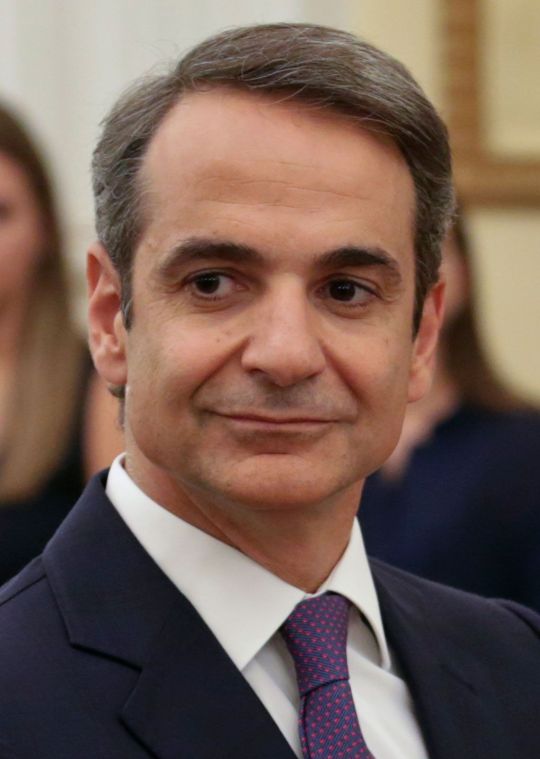
*sigh*
There is a connection through marriage to Venizelos' sister. Current Greek PM Kyriakos Mitsotakis is great (x3) grandson of his sister. So, he's his great (x3) grand nephew. Eleftherios Venizelos (1864 - 1936) was Greece's only political leader who could match Kapodistrias in competence and he is essentially responsible for the quadrupling of Greece's borders.
This TikTok says "part 1" so there will be more but I can already tell you a well known one:
Actress Natalia (again!) Dragoumi is grand niece of Ion Dragoumis (1878 - 1920), important political rival of Eleftherios Venizelos and a revolutionary of the Macedonian Struggle. Dragoumis also had a very interesting personal life that I have made a post about.


And I saved the "best" for last. I happen to know a descendant of a Greek Independence war hero. And not just any hero, THE HERO, if you know who I mean. I don't remember the exact relation but I wouldn't get too precise anyway. All I am saying is how you imagine and how the war hero was, the descedant is literally the exact opposite in everything, both in appearance and personality......
#greece#europe#history#greek history#historical figures#anon#mail#tiktok#ion dragoumis#notaras family#ioannis kapodistrias#eleftherios venizelos
21 notes
·
View notes
Text
Introduction/Catholicism in the Outback
Welcome to my blog! To introduce myself: I'm a 21 year old Australian woman about to start catechism in the Ukrainian Byzantine Catholic Church. I'll primarily be using this blog as an account of my journey in the spiritual life and with my other self-improvement endeavours. Thank you for joining me on this journey. Now to start my first blog post in media res.
At this time, I'm visiting my grandparents on their farm alongside my fiance, mother, and two younger brothers (18 & 10). This is our fourth day here. It's lovely being out in nature, waking up to kangaroos outside my window.
My fiance and I have been treating this as a spiritual retreat of sorts, seeking to restore our prayer life which has been falling to the wayside as of late. The two of us are staying in the cottage that sits behind my grandparents' house. I've been praying my usual minor hours of the Chasoslov (Horologion) and we've been doing a matins and vespers of sorts together, using the morning and evening prayers from our Orthodox Study Bibles. We've been using my fiance's Psalter instead of the single Psalm those prayers ask for. I'm really enjoying this style of prayer and am greatly considering adding it to my own prayer life. In addition, we've been reading through St. Cyril of Jerusalem's Catechetical Lectures together in order to prepare me for my own upcoming catechism. I still don't feel even remotely prepared but it's been a big help to my understanding of the faith.
Of course, we can't spend all of our time alone in our cabin in prayer. This is a family trip and a chance for my fiance to meet his future grandparents-in-law. This was also when we were able to tell my grandparents of our engagement, as I didn't want to tell them over the phone. This news has been passed on to my aunty who we are hoping to visit this year. She and my uncle live in Melbourne; just an hour away by plane. I've never been on a plane, or out of state, and there is a lovely Ukrainian Catholic Church in Melbourne that my fiance and I would love to see. However, the two we've spent more of our time with on this trip have been my grandparents' two dogs: Owwie the kelpie and Chanel the poodle. Owwie is very friendly and Chanel is too, though she can be rather skittish.
Though it was hot when we came up here, averaging at about 30° (that's Celsius) on our first three days, the weather has turned on us now. It's not overly cold, but it keeps raining. My fiance and I did use the pool the other day but have spent more of our time cleaning up the cottage. The last people to stay here were my aunty and uncle from Melbourne two years ago so there was a lot of grime stuck to the floors. It took us a good few hours but was well worth it. I've also gotten a start on using my self-care planner, gifted to my by a friend on my last birthday. I've written in the twelve major feasts (looking forward to the Holy Theophany tomorrow), along with all the birthdays and appointments I could remember. I plan to buy a packet of highlighters to distinguish the liturgical seasons on the year-at-a-glance section of my planner. I've also filled out a lot of my Glow Up doc, where I write out all of my goals for the year. I have one that I share with friends, a habit we started back in high school, but this is the first time where I've created one by myself. I've added additional headings (with friends the headings were: Fitness, Hobbies/Interests, Hot Girl Summer - whose most common goal was always "get a haircut", Money, School - now known as Education, Social, and Tomfoolery & Shenanigans), and gone into more detailed and personal goals. Hopefully that makes sense. It's extensive, and will become more so when I get back home to my laptop.
I haven't been doing as much independent reading I would like, only having read a few chapters of The Little Book of Skin Care by Charlotte Cho and my fiance and I have continued to slack on our exercise regime, but we still have three more days here.
And that's the end of my first blog post, the only other major thing we plan to do today is book in a time for both of us to take our driver knowledge test.
Christ is Born! Glorify Him!
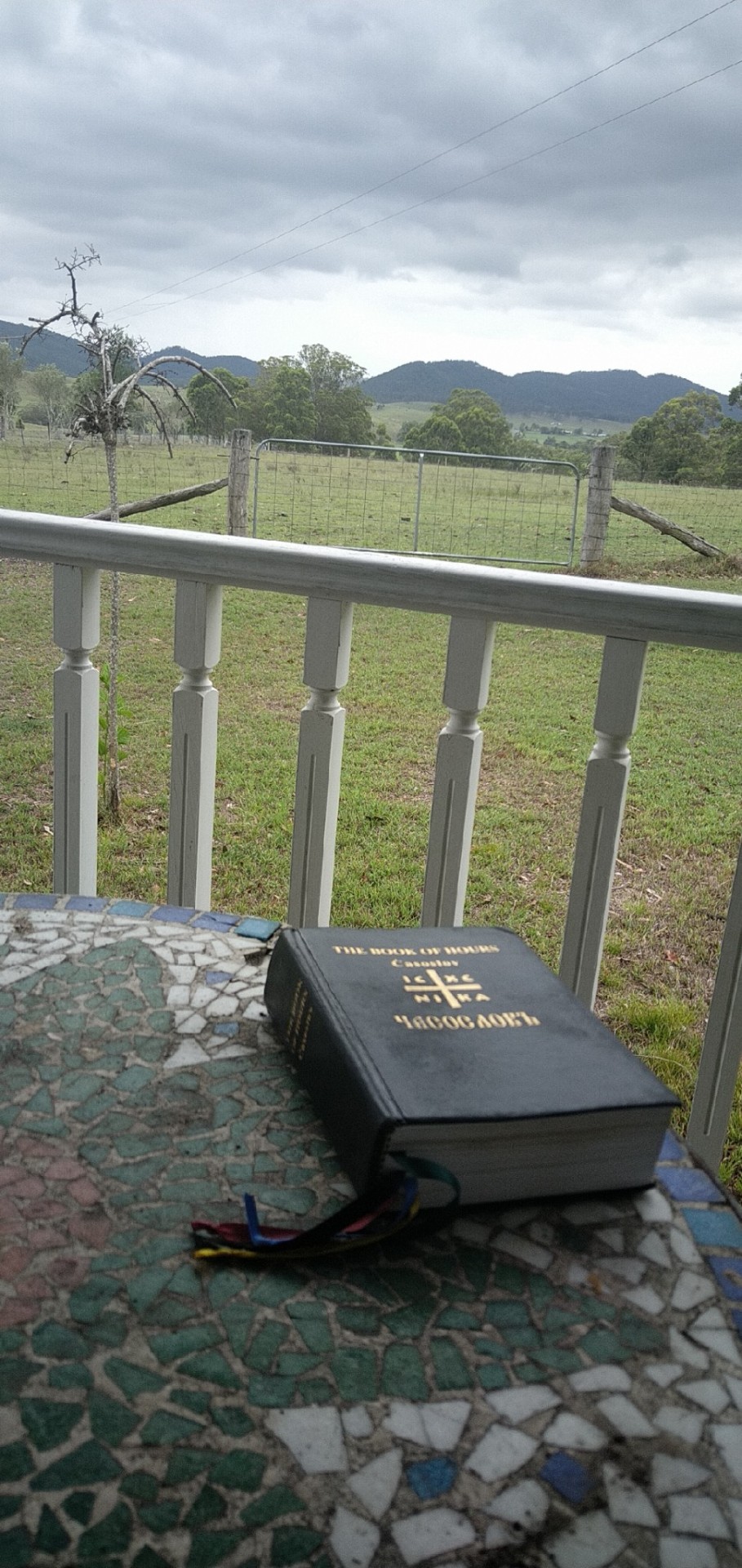


#catholic#catholic women#christianity#christian women#christian living#christian faith#church fathers#jesus christ#jesus#byzantine#eastern orthodoxy#orthodox christianity
4 notes
·
View notes
Text
It DOESNT MATTER if the Israelis' distant ancestors really came from Palestine
Leaving aside that "indigenous" in a political sense tends to mean "current victim of colonialism or post-colonial structures" and not "being originally from somewhere" (we don't usually call the French "indigenous") consider the following:
All Slavic people & their languages are thought to have originated in what is now Ukraine somewhere in the late middle ages and spread from there to everywhere they live today. Does that mean I can kick a Ukranian out of his house because I have a czech grandpa?
All the Bantu peoples are thought to have originated roughly in what is today Cameroon. Can any west or central African speaking a Bantu language kick out someone in Cameroon from their house? Or even a black person from the USA or the Caribbean?
All the Germanic Peoples originated from Jutland peninsula (what is today Denmark & some bits of Northern Germany.) - can a guy in England, Austria or the USA kick a Dane out of his house?
The people of Australia, Canada, the eastern USA & to a lesser extent South Africa (where many alre also descended from Netherlanders) are all descended from the English. Can they all come to England & kick an English farmer out of his house?
(they can, however, still in practice sometimes get an unfair advantage over Hawaiians & Puerto Ricans, or put a pipeline or mine through a Native American or Australian Aboriginal's home, or expropriate a black person to build a highway... at least there its not based on directly racist laws, in theory a rich POC could do it too.But in practice the result still often screws locals for short-sighted business ventures, so there is some stuff to be fixed still...)
The Romance languages all descend from Latin. Can any Italian kick ppl out out of everything that used to be Roman, including France, England and Bavaria?
Can any Greek kick someone out out of everything that used to be the Byzantine Empire?
Spain belonged to the Islamic empire for a long time. Can a Moroccan go kick a Spanish person out of his house?
Spain does give Spanish nationality to south american spaniards, (to attract skilled workers & fix low population growth), which I know cause my dad insisted on getting it due to patriotic feeling, but while he could buy a house there & vote, he cannot kick anyone out. Not even out of the exact village where his ancestors lived just 100 years ago.
Heck, the czech grandpa I mentioned? His family was expropriated when Communism took over. After communism, my mom & her siblings got an offer to get their farm/house back, but ONLY if they find the ppl currently living in the house an equivalent place.
It turns out there was a family of Romani ppl living there & it would be hard to find them a big house due to housing discrimination - my mom & her siblings just decided to let them keep the house since they were actually using it & none of us was planning to move to rural czechia. It seemed mean to kick out ppl who are being discriminated & had themselves lived there for decades now, after all we have our own places. (and my mom has, like, a painting of the town's church hanging in her living room & remembers living there as a little girl, & has stories about it, including some lewd jokes about the shape of the mountains.)
They should probably do a similar program in Palestine, where Palestinian families can get still-standing houses back or $$ for rebuilding destroyed villages, but the current inhabitants get provided for. Though probably the state should have to find them a new place, not impoverished Palestinians themselves. In the communist expropriation example, chances are the original owner was richer than the current one, which is different in Palestine.
Let us also consider the difference between conquest & immigration.
Conquest means you disrupt the social order & impose your own rules. This is clearly what was done in Palestine.
Immigration is different - I'm all for the right to immigrate & for ppl to live where they want, but immigrating means you fold yourself into an existing society & follow the laws there. (many ppl explicitly immigrate to places where they like the laws more)
The problem is not jewish ppl living in Palestine because they want to live in the land of their distant ancestors, but rather taking over & oppressing everyone else.
No one would mind my dad going to live in Spain where his ancestors lived. Indeed they would probably rejoice, he is a skilled worker & pays lots of tax. But if he came with an army, rebranded the country "new Cuba", demanded that everyone speak Latin American Spanish & started oppressing the local farmers, that would be a very different issue.
Though of course I wonder how many ppl care more about special treatment & free stuff than they do about religion or "connection to the land". Many might end up going to some gated community in the USA if they have to be equal citizens with no special privileges.
3 notes
·
View notes
Text
A quick Christian Religious Art History post because that post that bothered me said it was Christianity (sorry, “Xianity”) that was pushing the whole old man in the sky thing.
Early Christians painted pictures mostly of Jesus, Mary, the Apostles, some early saints. The Good Shepherd was a popular motif (sometimes a young, unbearded, very Roman-looking Jesus!) as well as Mary with the Infant Jesus. Very soon the style started veering towards what would be recognized as Byzantine Iconography.
The Byzantine (Eastern Orthodox/Greek Church) went through a period of Iconoclasm, where many Church leaders said there shouldn’t be pictures of anything dealing with God at all, which lead to the destruction of a lot of beautiful artwork in early churches (this is all pre-1000 CE). This was mostly due to Old Testament/Jewish Law against “worshiping graven images.” St. John of Damascus popped up and said, but Jesus changed the rules by being, like, God in the form of Man, so we can in fact make pictures of HIM as God (the Son). So the Eastern Orthodox church took off with iconography, pictures everywhere.
But icons are written by very specific rules, and Jesus is THE picture you will see of “God.” If you go into any Byzantine/Greek Orthodox/Eastern Orthodox church, you will probably find a huge mural of “Christ Pantocrator” or “Christ Almighty”. He looks like this:

Not an old man with a beard on a cloud.
So while the Eastern Church was doing that the Western/Roman/Latin Church just kept making art fairly freely. Most of this art had to do with the Harrowing of Hell or the Crucifixion or the ever popular Virgin with Child. Not God the Father. When Michelangelo did finally paint the Sistine Chapel ca. 1508 and the famed Creation of Adam, we were deep into the Renaissance, when everyone was “rediscovering” the art of ancient Greece and Rome, and trying to “bring back” the flavor of those Classical civilizations. So of course he painted God to look like Zeus/Jupiter and we ended up with this:
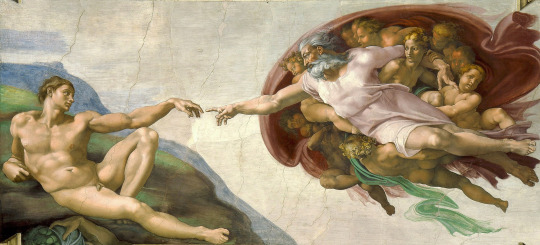
Old man kind of floating? It’s Michelangelo's classically-influenced idea of God the Creator. He was literally working from sketches of Greek and Roman statues. It was the style of the day.
It became one of the most replicated works of religious art ever. Thanks, Mike.
(And it’s actually got a lot of very clever symbolism about wombs and birth going on as well. Sorry there’s no women involved. Michelangelo was not real into the ladies.)
Meanwhile, in Germany, Martin Luther was getting his tights in a twist over various serious issues in the Roman Church and began the Protestant Reformation. This drove a whole crew of Christians back to Biblical Scripture and they pulled out the “no graven images” deal again. HUGE amount of artwork was destroyed in the Reformation, statues smashed, mosaics covered over. If you go to England it’s obvious on almost every cathedral, there are smashed statues or empty niches where statues used to be.
Because of this, a large portion of Reformed Christian churches are very skimpy on imagery, if they have any at all. When I say Reformed Churches, I’m talking Baptists, Methodists, Evangelical, Pentecostal, all the Protestant denominations. It varies, of course, but thanks to Puritan influence a huge number of churches in America ended up looking like Boston’s Old North Church, like this:

Maybe the Big Sky Daddy sits up in the balcony, I dunno.
So on one hand you’ve got Eastern Churches with Christ Pantocrator, then you’ve got the Roman Catholics with lots of crucifixes and Blessed Virgins and one (1) old man in a cloud from 1508, then you’ve got about 500 years of Protestants being exceedingly careful about having any images of God at all.
Overall, the main man you’re going to see in Christianity is Jesus, a guy in his early 30′s with dark hair and a beard. Yeah, there were some years he got more white than he should be. Sometimes he’s a little shiny. But it’s just this guy, you know? It’s not an old man in a cloud.
I hope this clarifies where the Old Man in the Cloud may have come from, though, re: popular culture and not actually religion, the same way learning about how a single Coca-Cola ad campaign created what we normally think of as Santa.
9 notes
·
View notes